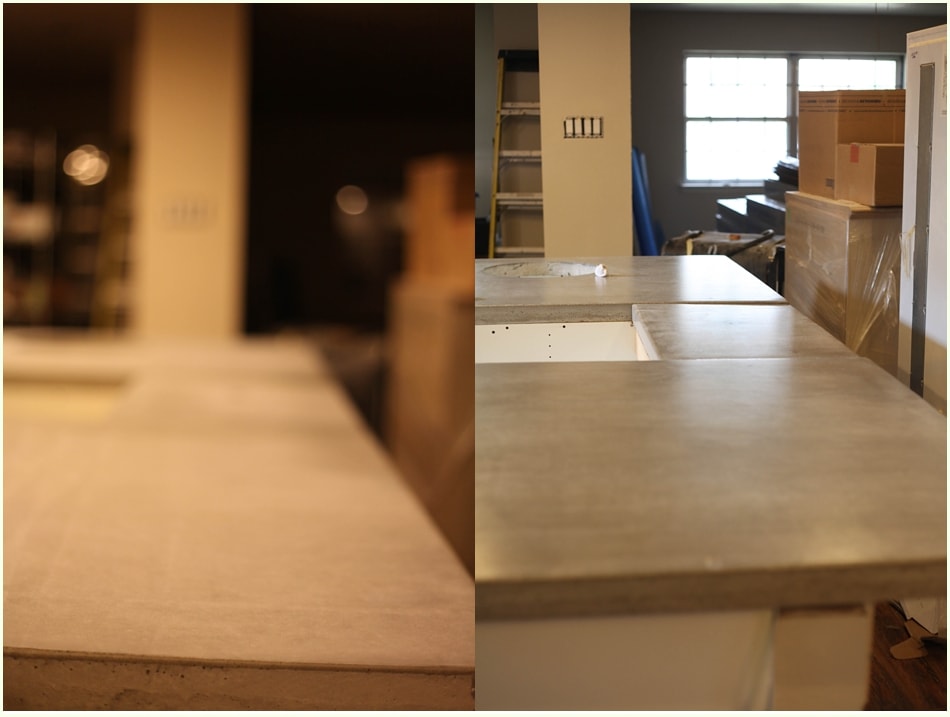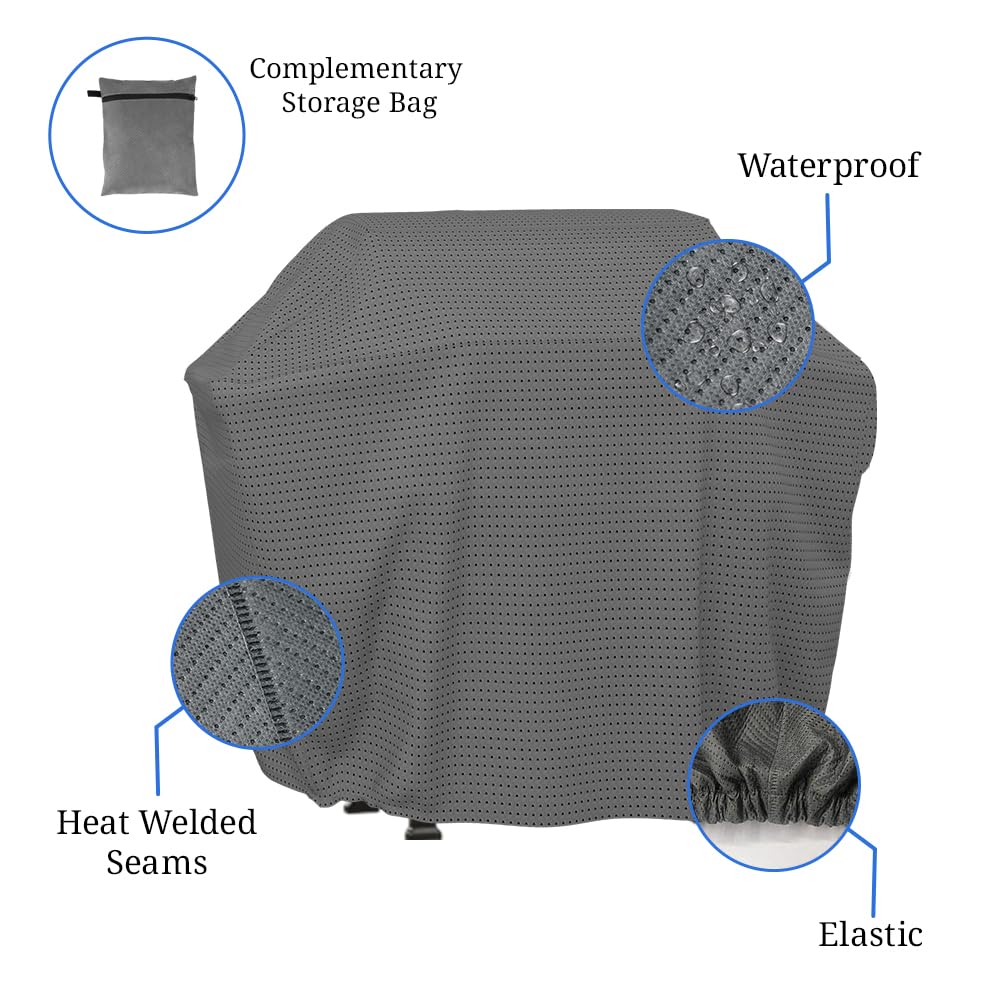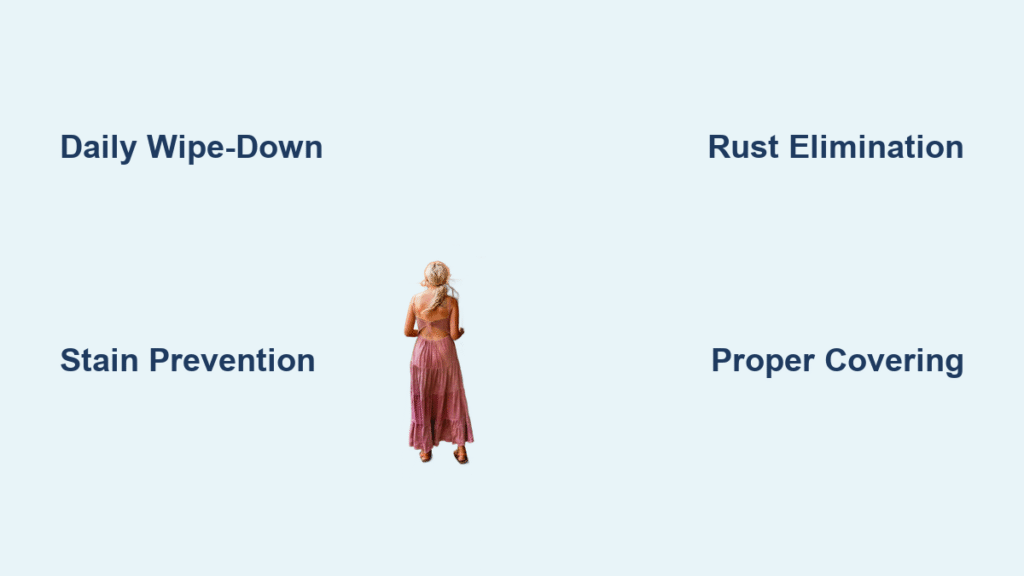Your outdoor kitchen should be the star of summer gatherings—not a grease-splattered eyesore that deters guests. When pollen coats granite counters, rust creeps across stainless steel, and last night’s burger drippings harden into concrete, knowing exactly how to clean outdoor kitchen surfaces saves your investment and sanity. This isn’t about occasional deep cleans; it’s mastering daily routines that prevent disasters. You’ll discover why vinegar beats pressure washers on concrete, how to banish rust spots in coastal areas, and the 5-minute post-grill ritual that avoids weekend-long scrubbing marathons. Let’s transform your space from neglected to pristine with actionable steps for every material and season.
Daily Cleaning That Prevents Weekend Disasters
Skipping immediate cleanup turns minor messes into permanent damage. Grease hardens within hours, attracting pests and etching surfaces. Your post-cook routine must take under 10 minutes to stick.
Post-Cooking Wipe-Down in Under 5 Minutes
While surfaces are warm (not hot), scrape grill grates with a nylon brush—metal bristles scratch coatings. Next, wipe countertops with a mild degreaser like Simple Green, followed by a bleach-free sanitizer. Never skip emptying trash; food scraps in warm bins invite ants and rodents within hours. Finally, sweep loose debris with a soft-bristled broom before it bakes onto surfaces. This daily ritual prevents 90% of deep-clean headaches.
Pre-Cooking Surface Refresh Protocol
Before firing up the grill, eliminate overnight contaminants in 90 seconds. Dampen a microfiber cloth with soapy water and wipe all prep areas to remove pollen, spider webs, or bird droppings. For granite or sealed stone, use material-specific cleaners—generic sprays strip protective sealants. Dry immediately with a chamois to prevent water spots. This step ensures hygienic cooking surfaces and stops debris from bonding to food during meals.
Deep-Cleaning Countertops Without Damage

Most outdoor kitchen disasters start with improper countertop care. Power washing concrete? That permanently etches finishes. Using vinegar on unsealed granite? Hello, stains. Material-specific protocols are non-negotiable.
Concrete Countertop Rescue Protocol
Never use pressure washers—they destroy protective sealants. Instead, rinse with a garden hose, then scrub with a soft sponge and mild dish soap. For stubborn stains, make a baking soda paste, apply it for 10 minutes, and gently scrub. Reseal annually using Ovation or manufacturer-approved products. Test sealant integrity by dropping water on the surface; if it soaks in instead of beading, reseal immediately to prevent permanent staining.
Granite and Stone Care Secrets
Daily cleaning requires only warm soapy water and a soft cloth—no vinegar or acidic cleaners. Disinfect with stone-safe products only; standard kitchen sprays degrade sealants. Perform the water-drop test every 6–12 months: if water darkens the stone within 15 minutes, reseal with food-safe impregnating sealer. Ignoring this leads to irreversible stains from wine, oil, or citrus during cookouts.
Stainless Steel Cabinet Revival
Bare stainless steel (304/316 grade) demands precise care. Wiping against the grain leaves visible scratches, while water spots become permanent in humid climates. Coastal areas face accelerated rusting—here’s how to fight back.
Rust Spot Elimination in 3 Steps
Rust spots signal moisture exposure. First, apply stainless steel rust remover with a microfiber cloth, working with the grain. Rinse thoroughly with clean water, then dry completely. Finally, protect the surface by wiping with a thin layer of cooking oil (canola or vegetable). This creates a moisture barrier without affecting food safety. In salty environments, repeat this weekly—neglect causes pitting that ruins cabinets.
Grill Deep Clean Without Scratches
Annual grill maintenance boosts performance and prevents dangerous flare-ups. Most homeowners damage burners by using metal tools—nylon brushes are mandatory for sensitive components.
Annual Burn-Off Method That Restores Performance
Shut off gas and disconnect the propane tank. Remove grates and sear plates, soaking them in hot soapy water. Extract burners and clear debris with a nylon brush—never metal tools. For interior buildup, coat surfaces with baking soda, spray with 50/50 vinegar-water solution, and let foam for 5 minutes before scraping residue into the drip tray. After reassembly, fire the grill on high for 15 minutes to burn off cleaning residue. Polish exteriors with Sheila Shine to prevent future rust. Skipping this causes grease fires from accumulated drippings.
Preventive Covering Strategies

Breathable covers aren’t optional—they’re critical for longevity. Plastic tarps trap moisture, accelerating rust and mold. Your covering strategy must adapt to weather patterns and usage frequency.
Coastal and High-Pollen Area Protection
After each use, cover appliances with breathable fabric covers once cooled. In coastal zones, apply a light silicone spray (like WD-40) to hinges monthly—avoid food-contact surfaces. For high-pollen regions, rinse surfaces weekly with a garden hose to prevent sticky buildup that etches finishes. During storms or extended absences, use full-island breathable covers even under pergolas; freeze-thaw cycles crack unsealed concrete in winter.
Essential Tool Kit for Stress-Free Cleaning
Using wrong tools destroys surfaces. Paper towels scratch stainless steel, while metal brushes damage grill components. Your kit needs these six non-negotiable items:
- Nylon grill brush (metal-free)
- Microfiber cloths (never paper towels)
- Mild dish soap, baking soda, and white vinegar
- Bar Keepers Friend for stainless steel
- Material-specific sealers (Ovation for concrete)
- Breathable appliance covers (e.g., CoverPros)
Keep supplies in a weatherproof caddy near your kitchen—convenience ensures daily compliance.
Final Maintenance Mastery Tips
Outdoor kitchen cleaning succeeds through consistency, not intensity. Start with the 5-minute daily wipe-down—this prevents 80% of deep-clean emergencies. Match your routine to your environment: coastal users need weekly rust prevention, while pollen-heavy areas require frequent rinsing. Always dry surfaces immediately; trapped moisture causes the most common failures. Invest in quality breathable covers—they’re cheaper than replacing warped cabinets. Remember, your outdoor kitchen was built for decades of use, but only if you respect material-specific needs. Implement these steps today, and your space will stay the neighborhood’s favorite gathering spot, ready for spontaneous cookouts with zero pre-party panic. The difference between a stunning oasis and a disaster zone isn’t your initial investment—it’s the daily discipline of knowing exactly how to clean outdoor kitchen surfaces the right way.



